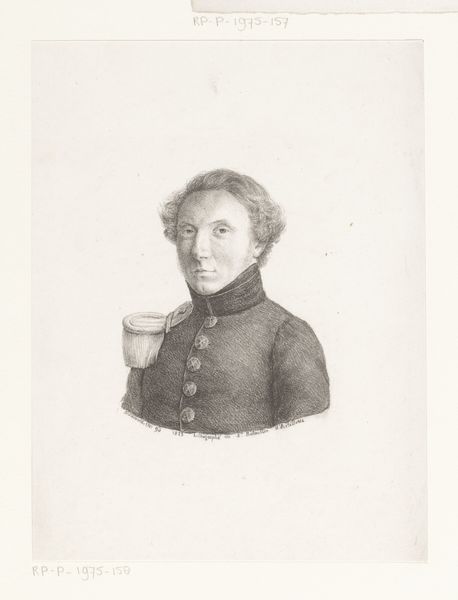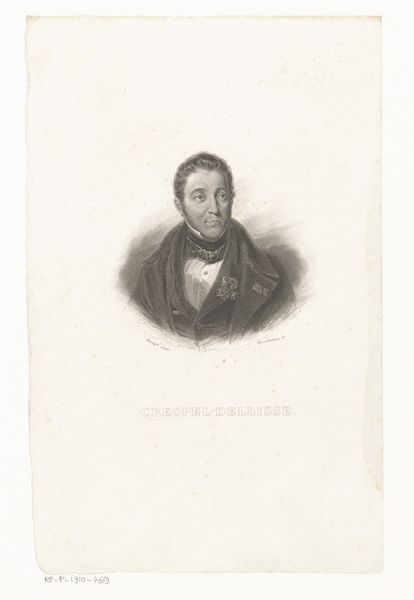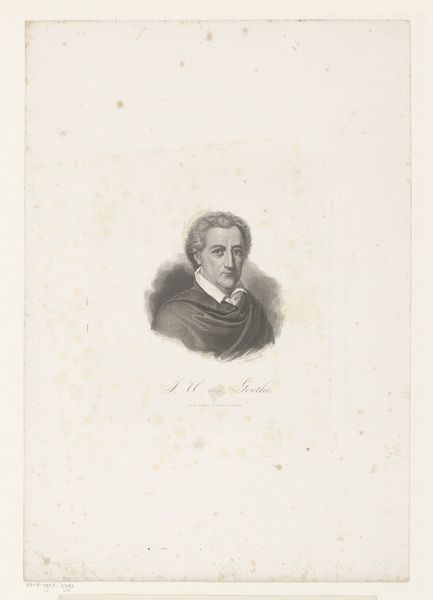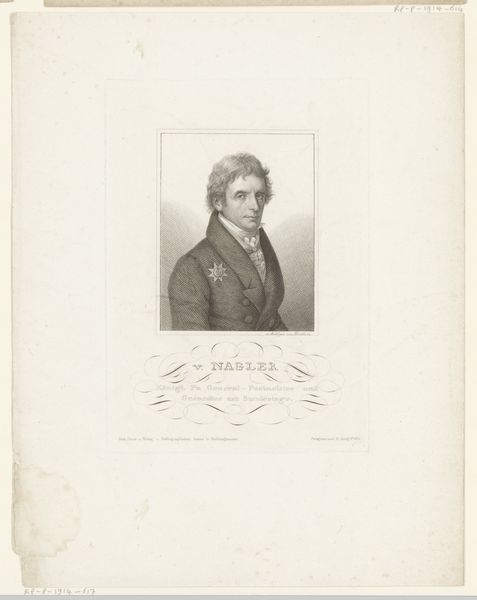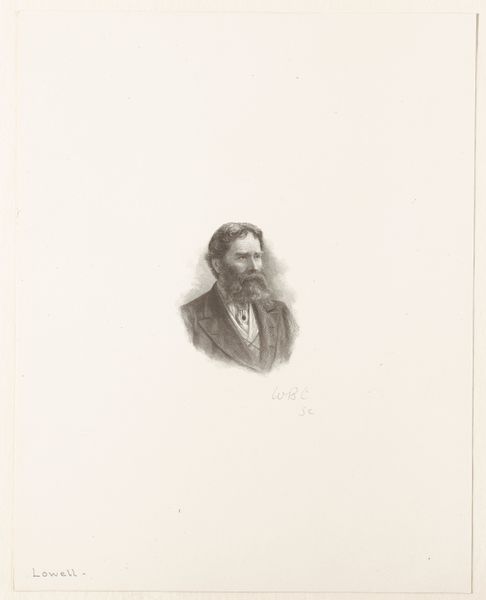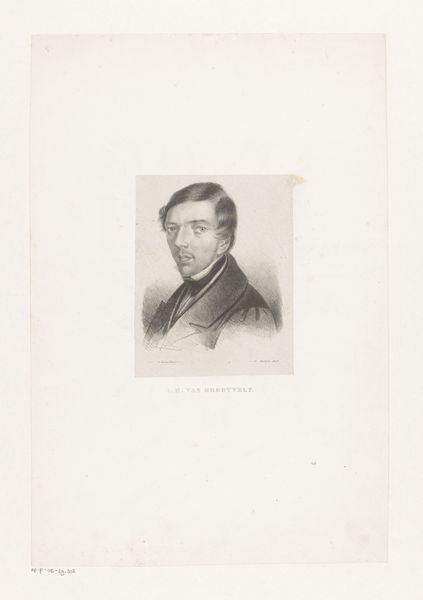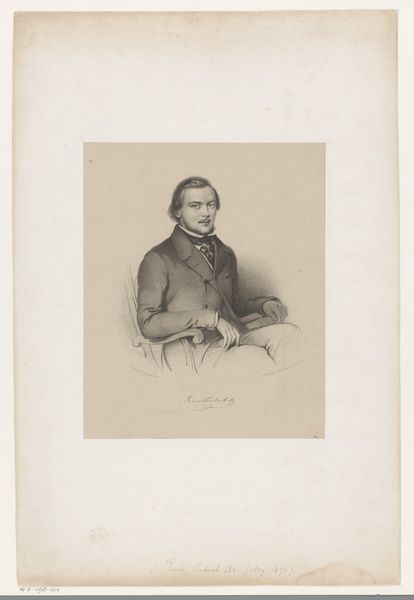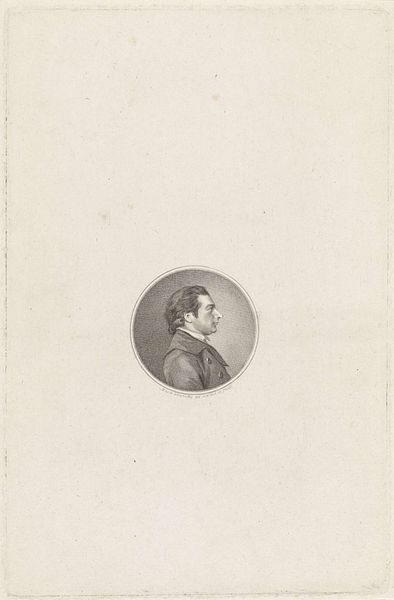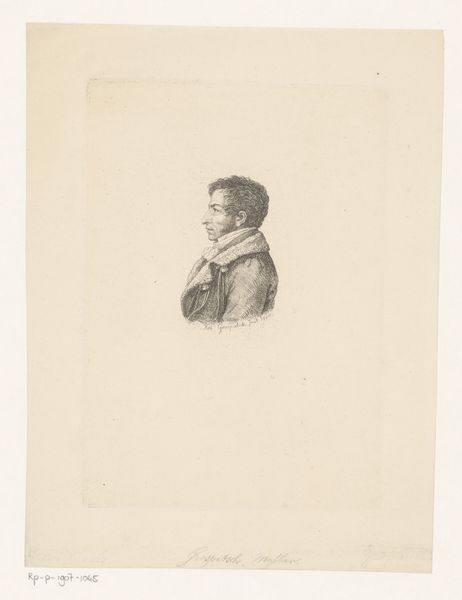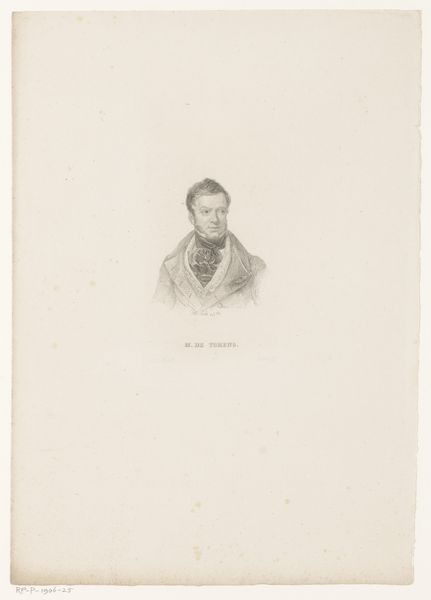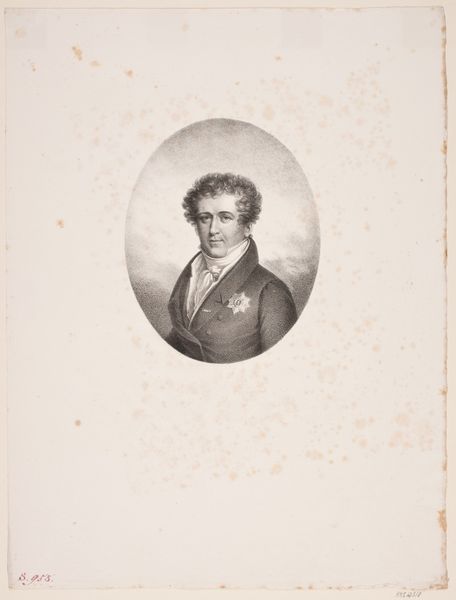
drawing, pencil
#
portrait
#
pencil drawn
#
drawing
#
light pencil work
#
shading to add clarity
#
pencil sketch
#
portrait reference
#
pencil drawing
#
romanticism
#
pencil
#
limited contrast and shading
#
portrait drawing
#
pencil work
#
academic-art
#
remaining negative space
Dimensions: height 294 mm, width 232 mm
Copyright: Rijks Museum: Open Domain
Editor: We're looking at a portrait entitled "Portret van onbekende militair" or "Portrait of an Unknown Soldier" by Christian Heinrich Gottlieb Steuerwald, dating sometime between 1822 and 1874. It's a pencil drawing and I'm struck by how much empty space there is around the figure. How would you interpret the composition of this piece? Curator: Observe how Steuerwald has rendered the figure. Note the sharp delineation of the uniform against the soft rendering of the face, especially around the cheeks. Do you see how the artist uses very subtle shading, creating volume without strong contrasts? This subdued approach seems central to understanding the work. Editor: I do. The lines are fine and delicate. There's a formality to it, especially with the tight collar and regimented buttons, but the soft shading of his face makes him appear more human, almost vulnerable. What is your view of the interplay between form and that subdued approach? Curator: Indeed. Note also that the gaze is directed toward the viewer but lacks a distinct focal point in the pupils, leaving his internal state indeterminate. We can discuss at length how Steuerwald prioritizes structural arrangement and surface treatment over traditional signifiers of character. The almost clinical handling of the portrait makes a comment about representation itself, don't you think? Editor: That's interesting; I hadn't thought about it that way, but I can see how the attention to the surface of the drawing almost becomes the subject itself, rather than just a representation of a soldier. It feels more like the study of a *drawing* of a soldier. Thanks, I appreciate the different lens to view it. Curator: Precisely. Examining its visual architecture reveals that its commentary might not lie within the persona depicted, but rather, resides in the semiotic language of portraiture itself. A rewarding exercise, indeed.
Comments
No comments
Be the first to comment and join the conversation on the ultimate creative platform.
